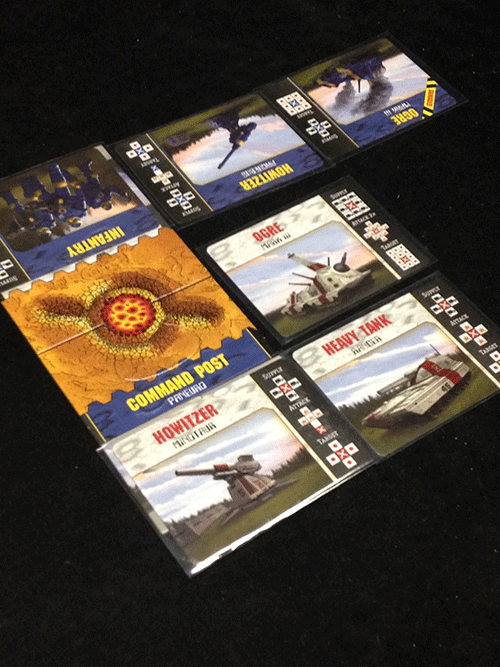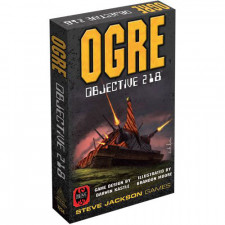Ogre: Objective 218 Review
on Aug 23, 2016
The Battle For Hill 218 was an underrated little WWII card game that was really a two player abstract dressed up in olive drab. Two forces battled over a central hill by placing surrounding units and fighting for territory. It had surprising depth and stood up to many plays.
One pattern that developed was my constant remarking of a desire to play 218 in the Steve Jackson Ogre setting.
Yeah, you got me. Literally no one was saying that except perhaps designer Darwin Kastle. When he announced last year that this was going to be a thing I paused momentarily, then immediately jumped on board.
And it unequivocally works. Each side still has an identical deck of cards comprised of a wide variety of units. You have Ogre staples like GEVs, Missile tanks, infantry. Oh, and Ogres. Yes, not one, but two of the hulking monstrosities exist in each deck. They're pretty damn sexy.
This is a relatively simple game that gives way to thoughtful interaction. You're taking turns throwing down units that need to trace supply back to your starting position. Each player has a base on opposite sides of the central hill and you have to snake around the high ground and take out your opponent's home.
Units are placed in a faux grid on the table and attack upon entering the battlefield. They can hit one target according to the attack pattern on the card but typically require supporting units to inflict a kill. It's very tactical and about gaining ground and propelling yourself to victory through momentum.
Things mostly work the same as in Battle For Hill 218 with the exception of supply. Units used to trace their supply to certain spaces surrounding their own which limited and dictated deployment. It almost functioned like a faux terrain element as you had to juggle the supply puzzle with your desires of battlefield position. For this reason it stood as one of the defining elements of the game and served as a large part of its identity.
Now, units instead provide supply to specific adjacent spaces. This is subtle on the surface but it has a definite impact on the flow of the game. The result is a faster pace and more mobile forces which represents the futuristic military hardware pretty well. It's not enough to totally reshape the design but it's a new set of parameters for the old puzzle.

Also, man those Ogres. We now have two huge combat beasts in each deck that can totally wreck enemies. When you place an Ogre it will instantly take out whatever’s targeted and it will be a bear to remove, requiring multiple hits. When and where you choose to place these has a large impact on the outcome and is a key strategic element.
Often times Ogres will be held back as a counter punch to an enemy deploying their own and you can get in this errant game of chicken. This can heighten the tension of the smaller battles in between as the stakes raise and carefully manipulate the pace. Other times you will want to push the tempo and throw one down early to establish board presence. Whichever direction you go the game state will adapt and it will produce a different experience and mood. The one irksome quality of this release is the shoddy 3D graphic artwork on the cards. The cover is exceptional and it would have been greatly preferred if all of the units boasted a similar style of illustration. Failing that, a top down approach for the units similar to the counters in actual Ogre would have been good enough. Unfortunately as-is the visual presentation undermines the quality of the game.
Getting past these visual discrepancies isn’t difficult once the game starts firing. What it boils down to is that we have nifty fresh supply rules, interesting sci-fi units, and large Technodromes wheeling around. It still retains the stellar abstract qualities of seizing ground, card by bloody card, while providing some new tricks. This one isn't going to slap you upside the head or rock your world, but it's solid and completely worth its modest price.

 Customer Support
Customer Support  Subscribe
Subscribe 




 Account
Account  Wishlist
Wishlist 

